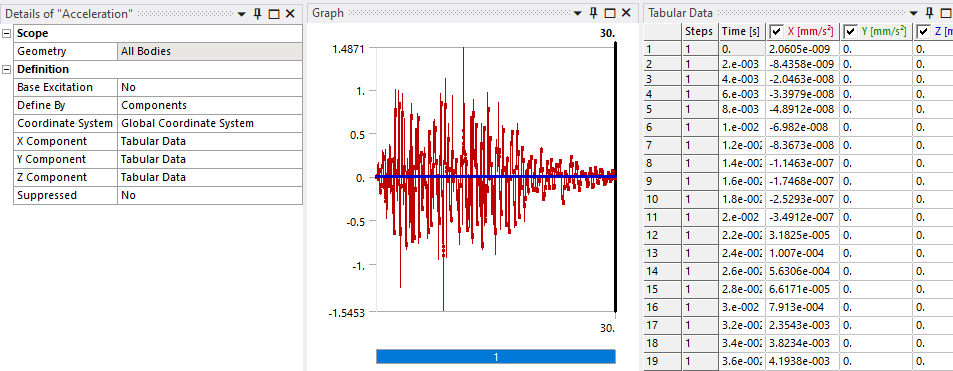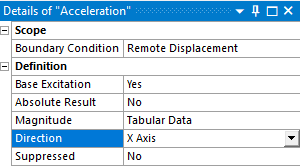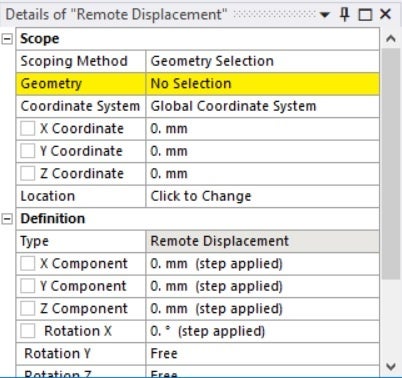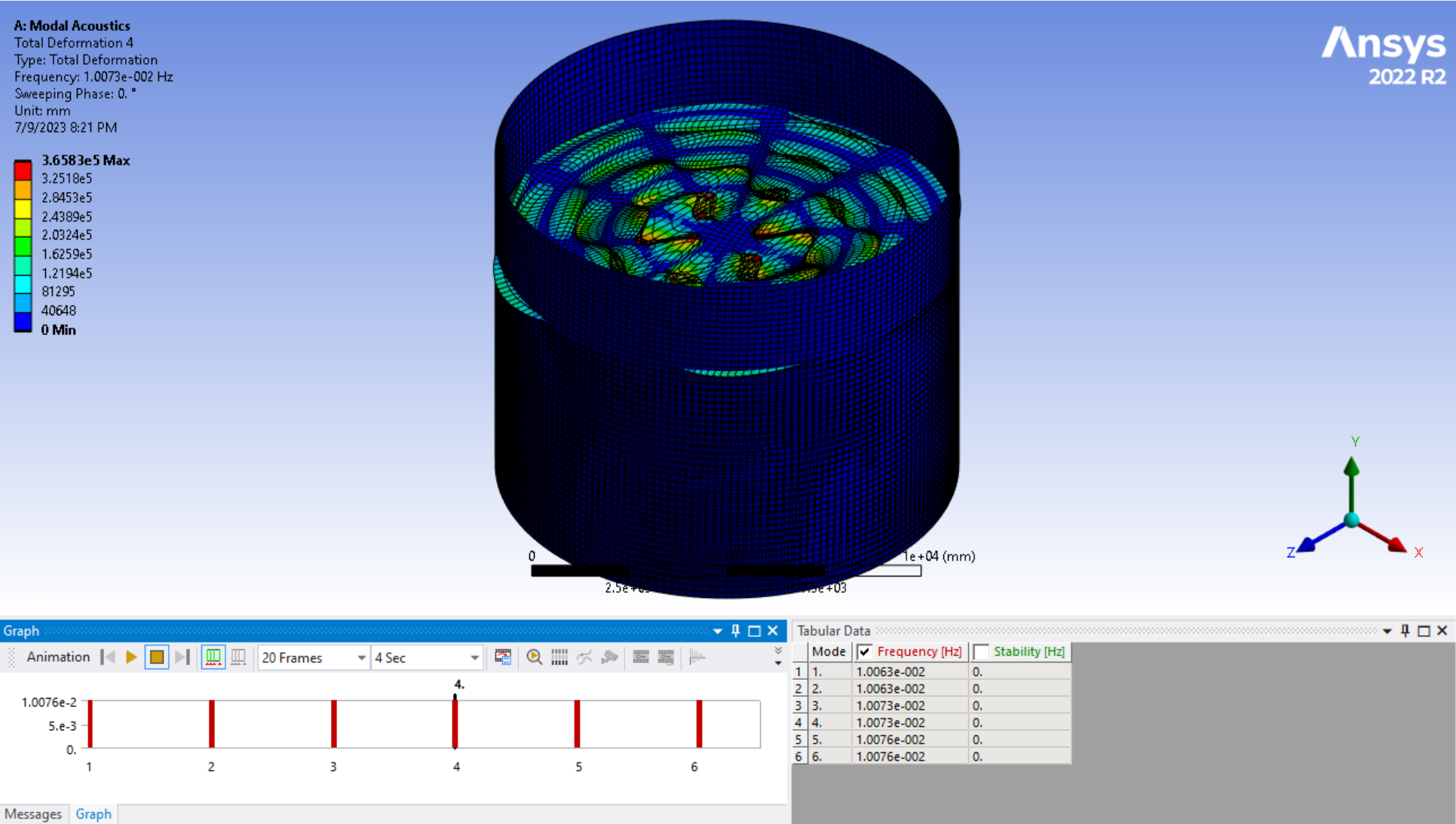-
-
September 12, 2021 at 7:04 pm
Baloch
SubscriberDear all hope you all are in good health. I am new on ansys and I have to perform nonlinear time history analysis (displacement and acceleration response) on a three storey RCC structure against earthquake loading. Can anyone guide one which module is best to use i.e explicit dynamic, transient structure etc or there is an other way to perform the analysis? If anyone can guide or refer to some materials will be highly appreciated?
Best regard
Mereen Hussain
September 13, 2021 at 1:49 ampeteroznewman
SubscriberYou can use Transient Structural. Do you have the acceleration time-history of the earthquake? Do you have it for one, two or three axes? What orientation are you going to apply the earthquake relative to the structure?
Is it necessary to obtain the time-history of the structure? Is is sufficient to know just the maximum response of the structure to the earthquake? If so, you can use Response Spectrum anlysis.
September 13, 2021 at 4:21 pmBaloch
SubscriberI have the time-history of earthquake for one axes and I need to apply in a pre defined direction. I need to find the response history and inter-strorey drifts with non linear analysis. Can we go with non-linear analysis in response spectrum? However, I figures out already that I have to perform time history analysis on an RCC frame structure for earthquake loading in the transient module of ANSYS mechanical. From the input table of applied acceleration, when I turn on the base excitation option, I can not select the boundary conditions and the direction of applied acceleration; while I turn off the base excitation option, the software selects all bodies, but I am also not able to select any direction.
September 14, 2021 at 10:51 ampeteroznewman
SubscriberResponse Spectrum is a Linear Analysis, so you cannot use nonlinear materials.
With Base Acceleration Off, set the Acceleration to Components, then you can control the direction by using a Coordinate System in the Details. You don't have to use the Global Coordinate System.
 With Base Acceleration On, you can only have a single axis and it must be a Global axis. What do you mean you can't select a Boundary Condition? That is the first line.
With Base Acceleration On, you can only have a single axis and it must be a Global axis. What do you mean you can't select a Boundary Condition? That is the first line.
 If you want the earthquake acceleration about an axis that is not aligned with Global, then you must rotate the geometry so that the Global axis is aligned with the desired direction.
If you want the earthquake acceleration about an axis that is not aligned with Global, then you must rotate the geometry so that the Global axis is aligned with the desired direction.
September 14, 2021 at 6:20 pmSeptember 14, 2021 at 7:16 pmBaloch
SubscriberCould you please have a look on my model As I already created a remote displacement but still not able to define the boundary condition in acceleration tab.
September 14, 2021 at 10:12 pmpeteroznewman
SubscriberWhat version of ANSYS are you using?
September 15, 2021 at 9:11 amBaloch
SubscriberI am using 2020R2.
September 15, 2021 at 10:19 pmpeteroznewman
SubscriberAdd a Modal analysis and then link a Transient Structural model to the Modal and you create a Modal Superposition (MSUP) analysis.
 The Modal analysis needs the Fixed Support, and the Transient 2 that is linked to the Modal Solution inherits that boundary condition, so you just add the Acceleration to the Transient 2 and you can use Base Excitation and set the direction as shown below.
The Modal analysis needs the Fixed Support, and the Transient 2 that is linked to the Modal Solution inherits that boundary condition, so you just add the Acceleration to the Transient 2 and you can use Base Excitation and set the direction as shown below.
 September 16, 2021 at 2:45 pm
September 16, 2021 at 2:45 pmBaloch
Subscriberfor now its working hopefully ill get the desired results. Thanks
December 29, 2021 at 10:11 pmEsteban_Guajardo
SubscriberHi Everyone, I hope that my question is an extension of this topic.
I'm trying to perform a Time-History analysis to a tank with water. I've getting good results of Eigenforms with modal acoustics, but not with modal spite of the assignment of Bulk Modulus 2,2E+09 Pa and Poisson's Ratio 0,49 for Water and so on. That is why think I'm gonna stick with modal acoustics, but I do not know how to couple Modal Acoustics and Transient Structural (for TH Analysis).
I would appreciate your help Thanks!
December 30, 2021 at 1:35 ampeteroznewman
SubscriberHow much fluid sloshing are you talking about? You need Fluent or CFX solvers to get proper fluid loads for a significant transient acceleration.
December 31, 2021 at 11:55 pmEsteban_Guajardo
SubscriberThanks for your replay!!!!
Im talking about diamaters from 5m to 20m and heights from 5m to 30 m, with aproximately 80% of water filling for each Tank. My problem would be then how to enter the base acceleration in Fluent... can you couple Modal acoustics with Fluent?
I would really appreciate your help, and thx again for your answer!
January 1, 2022 at 4:52 pmpeteroznewman
SubscriberI am not the expert in Fluent, but I know there are two approaches to cause fluid to slosh.
The simple approach is to apply transient acceleration to the water. There is a gravity force pulling the water down. If you take the lateral acceleration time history I show in my September 2021 reply to Baloch, and add the Y coordinate acceleration to represent gravity, that is all that is needed.
The more complicated approach is to create a moving mesh to the surfaces of the tank, and move those with the lateral accelerations in the time history and have a simple constant gravity load.
After you have solved the transient model for the fluid motion, you can transfer the pressure on the sides of the tank to a structural model. This is called one-way FSI. The deformation of the tank wall caused by the pressure has an insignificant effect on the fluid motion. The reason for transferring the pressure to the structural model of the tank is to see the stress in the tank walls and support structure and check the strength of the design.
I am also not the expert in acoustics, but I know that the unknown quantity the solver is computing is nodal pressure. The nodes don't move. Contrast this with the Structural solver where the unknown quantity the solver is computing is nodal displacements. The nodes do move.
Since the nodes in the water don't move in an acoustics model, I don't think a Modal Acoustics solution has any relevance to the motion of the fluid in a tank during an earthquake.
-
July 9, 2023 at 11:20 pm
aboa2000
SubscriberHow do you apply a transient acceleration to the water? I have an acceleration time plot, and I am trying to model the same sloshing problem of a fluid-filled tank in Ansys fluent.
January 4, 2022 at 4:06 pmEsteban_Guajardo
SubscriberAgain, thanks a lot for your reply.
You talk about a more complicated approach would be to create a moving mesh to the surfaces of the tank. I could understand this effect like the free surface that is possible to define in Modal Acoustics. That is a really interesting approach. Would be possible for you to show me, how can I create this moving mesh on the surface of the liquid? You do it in Modal or in Transient Structural?
Thanks again!
January 4, 2022 at 4:39 pmpeteroznewman
SubscriberI haven't tried the Free Surface effect in Modal Acoustics.
I suggest you begin with the simple approach to learn Fluent. You will want to use a VOF model.
If you have questions about that, open a New Discussion in the Fluids category.
Below is a list of tutorials to help you get started with a Fluent VOF model.
https://www.google.com/search?q=fluent+vof+tutorial
-
July 10, 2023 at 12:24 am
aboa2000
SubscriberI attempted the acoustic analysis option but got the following results.
Along with the following messages:
One or more Contact Regions have Contact Shell Face or Target Shell Face set to Program Controlled. This can adversely affect performance when writing the input file. Consider displaying element normals and selecting either Top or Bottom shell face.
One or more Contact Regions are connected to Acoustic Physics Regions. To improve the solution, the contact settings may have been overwritten internally. Refer to the notes for Acoustics Analysis in the Help System for more details.
May 1, 2023 at 3:02 amRandel Ilumin
SubscriberHello. I would like to ask how about in the case of using APDL? How to apply acceleration and how to consider boundary conditions at the ground level. Also, how about the effect of gravity load? I tried to develop a command but I'm not really sure about this. I really need help. Thank you.
/SOLU
FILE = ‘accelvalidate1’
DT = 0.01
SKIP = 0
/INQUIRE,NUMLINES,LINES,FILE,TXT
READ = NUMLINES - SKIP
*DEL,ACCEL,,NOPR
*DIM, ACCEL,TABLE, READ - 1, 3
*TREAD,ACCEL,FILE,TXT,,SKIP
ANTYPE, TRANS
TRNOPT,FULL
TIMINT,ON,STRUC
ACEL,0,9.806,0
KBC,0
OUTRES,ALL,1
OUTPR,BASIC,ALL
NT = READ
NSUBST,1,,,1
*do,i,1,NT
TIME,i*DT
CMSEL,ALL
NSEL,S,LOC,Y,0
DDELE,ALL,ACCX
DDELE,ALL,ACCY
DDELE,ALL,ACCZ
D,ALL,ACCX,ACCEL(i,1)
D,ALL,ACCY,ACCEL(i,2)
D,ALL,ACCZ,ACCEL(i,3)
ALLSEL
SOLVE
*enddo
Viewing 16 reply threads- The topic ‘How to perform time history analysis?’ is closed to new replies.
Innovation SpaceTrending discussions- LPBF Simulation of dissimilar materials in ANSYS mechanical (Thermal Transient)
- Convergence error in modal analysis
- APDL, memory, solid
- Meaning of the error
- How to model a bimodular material in Mechanical
- Simulate a fan on the end of shaft
- Real Life Example of a non-symmetric eigenvalue problem
- Nonlinear load cases combinations
- How can the results of Pressures and Motions for all elements be obtained?
- Contact stiffness too big
Top Contributors-
4167
-
1487
-
1338
-
1188
-
1021
Top Rated Tags© 2025 Copyright ANSYS, Inc. All rights reserved.
Ansys does not support the usage of unauthorized Ansys software. Please visit www.ansys.com to obtain an official distribution.
-


Ansys Assistant

Welcome to Ansys Assistant!
An AI-based virtual assistant for active Ansys Academic Customers. Please login using your university issued email address.
Hey there, you are quite inquisitive! You have hit your hourly question limit. Please retry after '10' minutes. For questions, please reach out to ansyslearn@ansys.com.
RETRY









